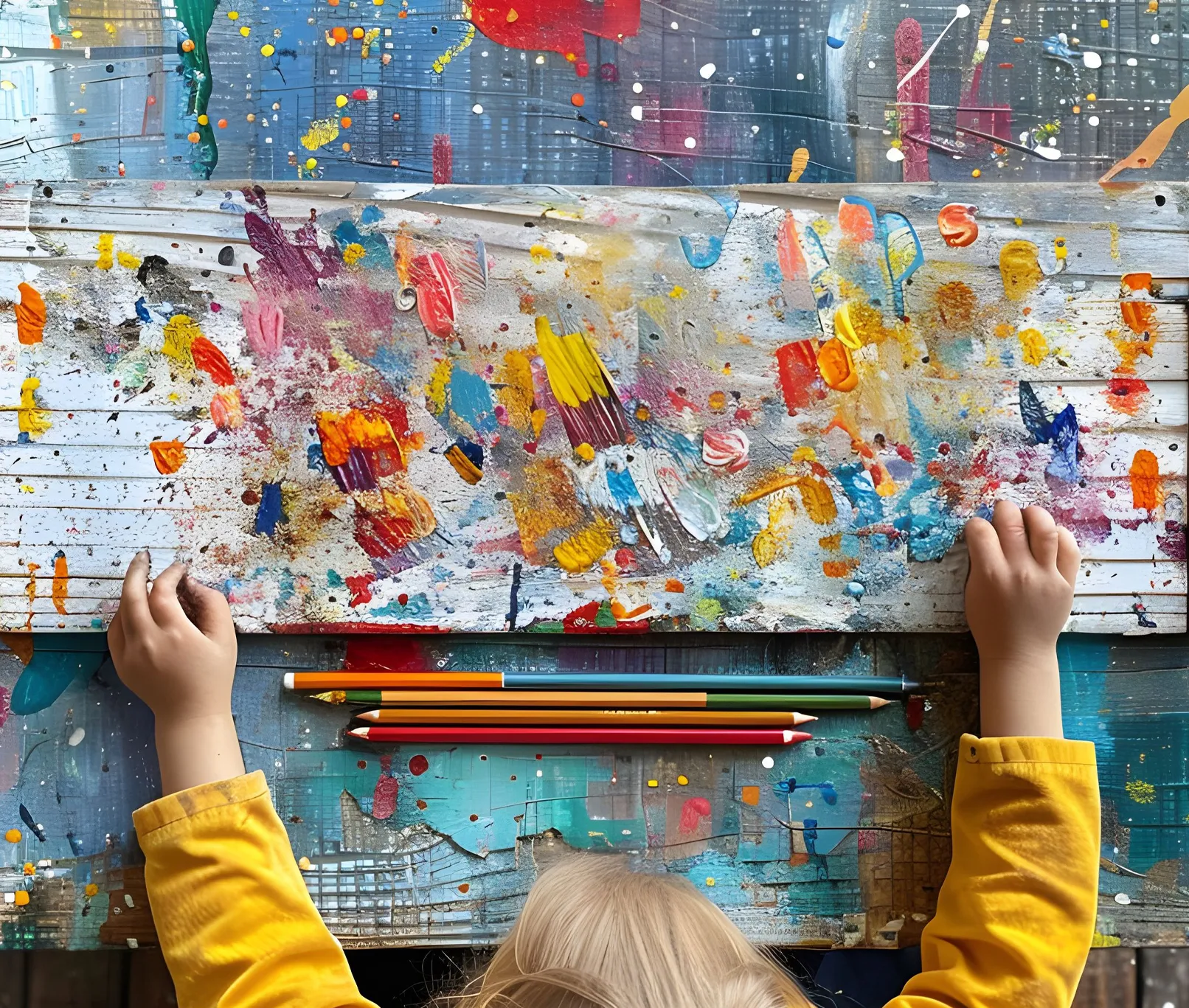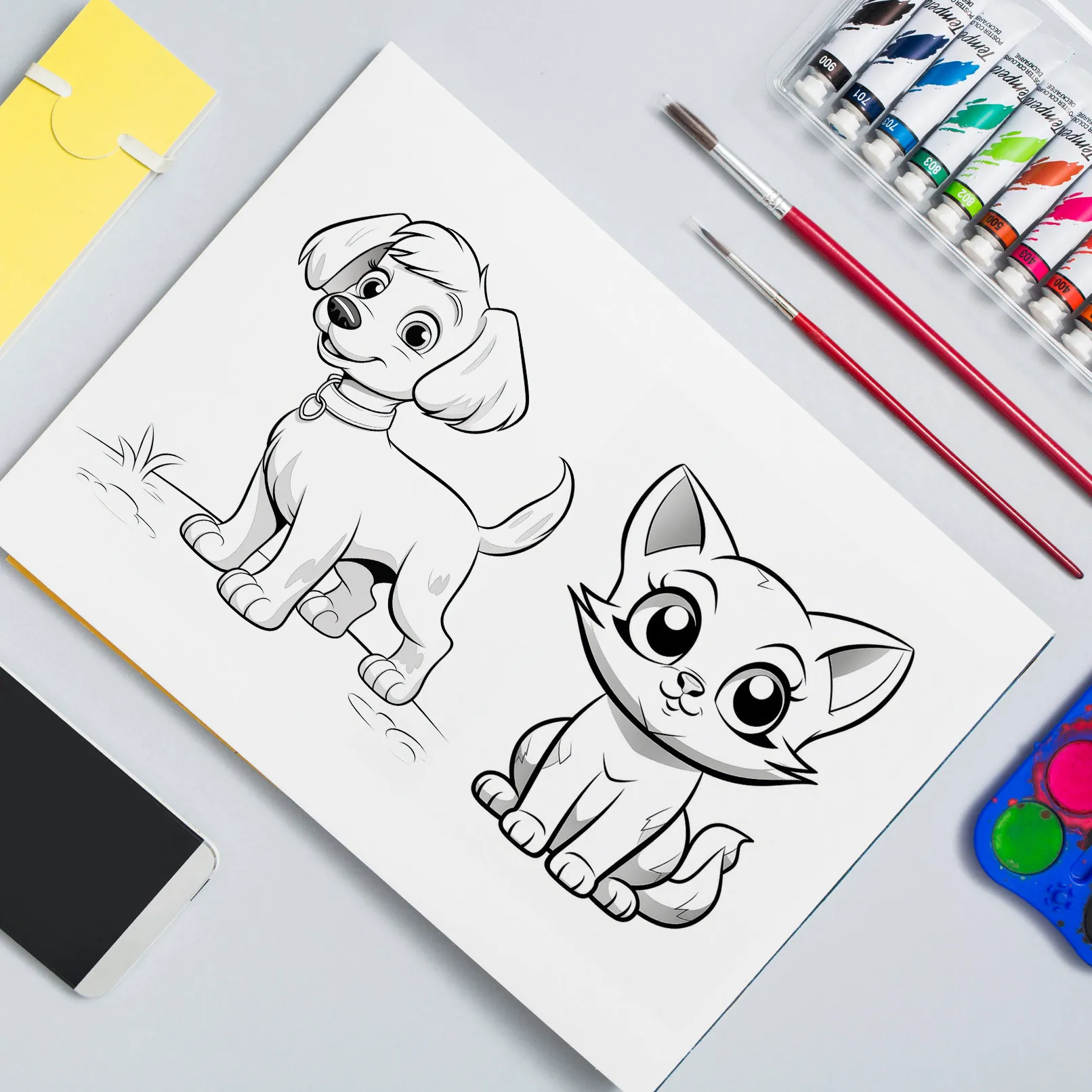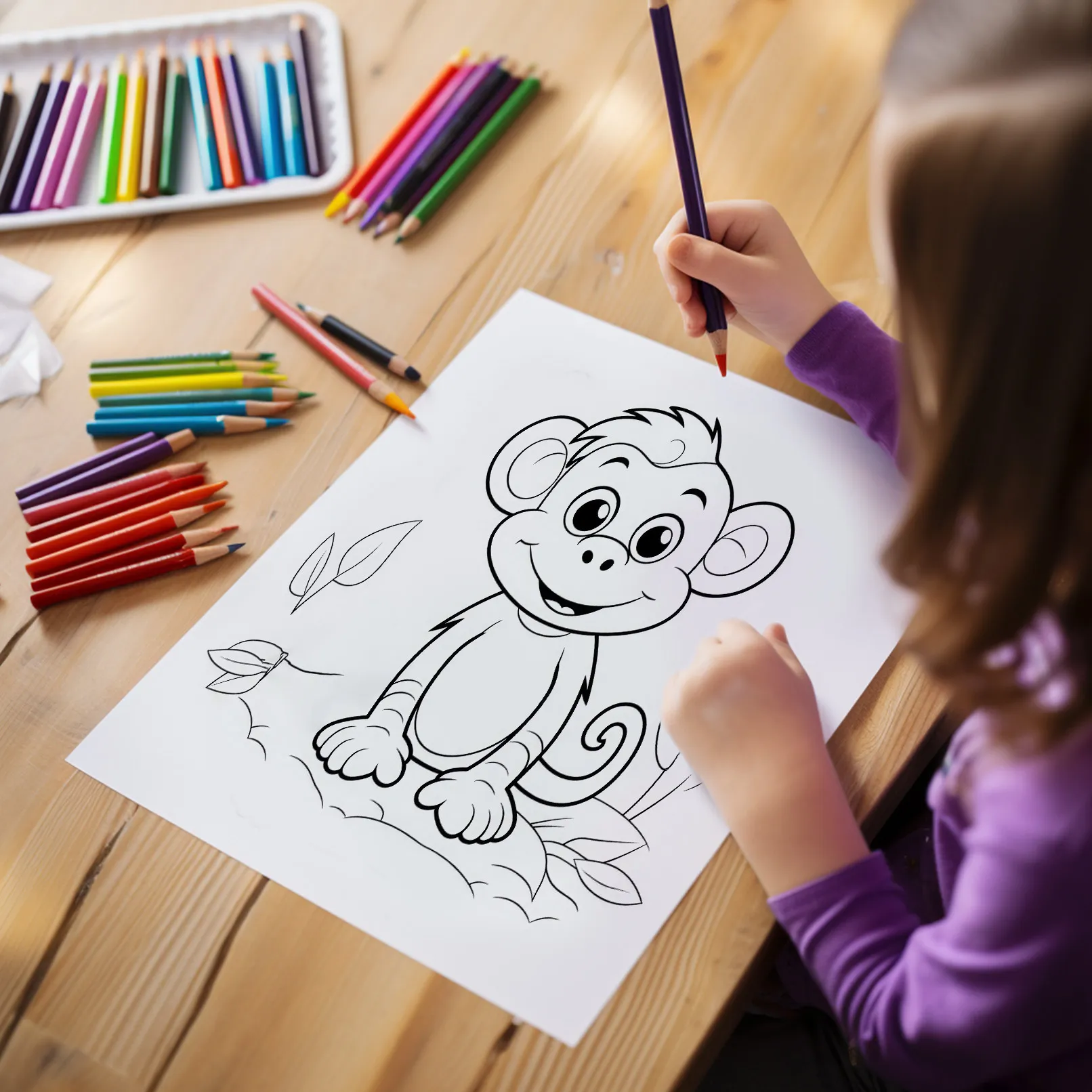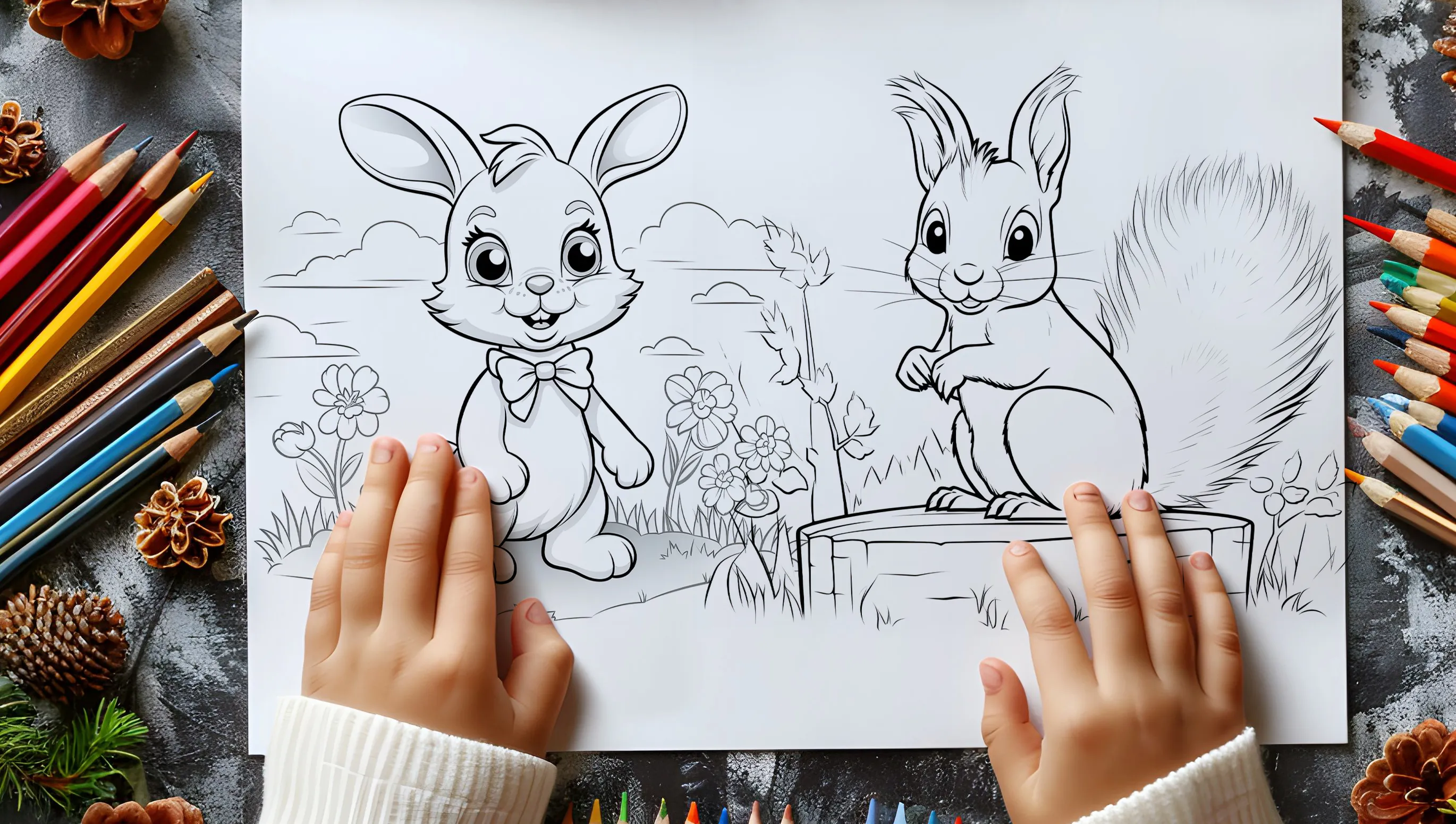Coloring pictures is part of a child's development. Coloring pictures with animals are particularly popular with children. Not only do they provide fun and entertainment, but they also promote the development of fine motor skills and concentration. In this article, we look at various aspects of animal coloring pictures and give some valuable tips to help your little artists have creative fun.
Table of contents
Why are coloring pictures with animals useful?
Coloring pictures, especially those with animals, offer children many opportunities to develop their creativity. They help children to recognize different animals and encourage their creativity through the choice of colors and shading. At the same time, they improve hand-eye coordination and promote relaxation.

Development of fine motor skills
Fine motor skills are very important for a child's everyday activities. Coloring pictures, especially filling in small areas, encourages these skills.
Encouraging concentration
Coloring requires concentration and patience. Therefore, coloring animal pictures can help improve a child's ability to concentrate.
It took me four years to paint like Raphael, but a lifetime to paint like a child.
Pablo Picasso
This is a famous sentence by Pablo Picasso. He wanted to express that it is a great challenge and a lengthy process to acquire the immediacy, simplicity and impartiality with which children paint and draw. For him, the ability to see the world with the openness and wonder of a child and to depict it artistically was an ideal worth striving for.
Encouraging creativity
When coloring animal pictures, children can let their imagination run wild. The choice of colors and the play with shades contribute to the development of creativity.
Choosing the right materials
Choosing the right materials is just as important as the picture itself. Wax crayons are ideal for beginners as they are easy to handle and large areas can be colored in quickly. Thick felt-tip pens are a good alternative for children who have difficulty with hand strength or don't enjoy drawing. However, the triangular colored pencils are best suited to improving graphomotor skills.

Instructions for coloring animal pictures
Here are some steps you can follow to help your child color animal pictures:
Choose a suitable coloring picture
Choose a coloring picture that is appropriate for your child's age and abilities. For younger children, simple pictures with large areas that are easy to color are suitable.
Provide materials
Provide your child with a variety of crayons to choose from. Encourage your child to try out and mix different colors.
Color the picture
Let your child color the picture at their own pace. Don't correct them if they color over the lines - it's all about fun and creative expression!
Evaluate the work
Praise your child's work and show interest in what they have created. This will boost your child's self-confidence and encourage them to continue coloring.
Tips for more fun when coloring
To make coloring even more fun and educational, you can follow a few tips:
Tell stories
Tell your child stories about the animal in the coloring picture. This can arouse your child's interest and curiosity and encourage them to find out more about the animal.

Try out different coloring techniques
Encourage your child to try out different painting techniques, e.g. mixing colors, adding textures or shading.
Post your artwork on social media
Post your child's colorful pictures. This gives your child the feeling that their work is appreciated and motivates them to continue painting. Ask friends and acquaintances to praise your child's work.
Coloring pictures with animals on TutKit.com
In summary, coloring animals is a valuable leisure activity for children. They not only promote creative skills, but also motor and cognitive skills. By choosing the right materials and following some useful tips, you can provide your child with a creative and developmental experience. So, download the animal pictures from our portal and color them in!

